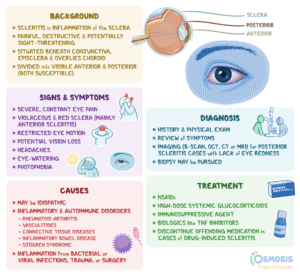Non-BRCA Gene Mutations That Raise Breast Cancer Risk

Non-BRCA Gene Mutations and Their Role in Breast Cancer Risk
Introduction to Non-BRCA Gene Mutations and Breast Cancer Risk
While BRCA1 and BRCA2 mutations are well-known for increasing breast cancer risk, other inherited gene mutations also play a significant role in elevating the likelihood of developing the disease. It is believed that mutations in over 100 genes contribute to breast cancer risk, with ongoing research continuously expanding our understanding of these genetic factors. Some of the key non-BRCA mutations that increase breast cancer risk include those in genes such as ATM, PALB2, PTEN, CDH1, CHEK2, TP53, STK11, and PMS2.
Genetic Contribution to Familial Breast Cancer
Current research suggests that between 5% and 10% of breast cancer cases are genetic or familial in nature. However, not all of these cancers are linked to BRCA mutations. In fact, only a portion of hereditary breast cancers are associated with BRCA1 or BRCA2 mutations, prompting genetic tests for other mutations. Understanding the biology of gene mutations is essential for unraveling the complexities of how these genetic changes contribute to cancer development.
Inherited vs. Acquired Gene Mutations
It’s important to distinguish between inherited (germline) and acquired (somatic) gene mutations when discussing cancer risks. Acquired mutations are not present from birth but occur later in life, often due to environmental factors or natural metabolic processes. In contrast, inherited mutations are passed down from one or both parents and affect all cells in the body. These inherited mutations are responsible for familial breast cancers, contributing to a higher risk of developing the disease.
The Mechanisms Behind Inherited Gene Mutations
Genes act as blueprints for producing proteins that perform vital functions within cells. When mutations occur in genes responsible for cellular growth and division, such as “driver mutations,” they can lead to uncontrolled cell growth, which is characteristic of cancer. Tumor suppressor genes, like BRCA1 and BRCA2, play crucial roles in DNA repair and cell growth regulation. Mutations in these genes, along with others, may contribute to cancer development by disrupting these protective functions.
Gene Penetrance and Cancer Risk
Not all mutations contribute to breast cancer risk equally. Gene penetrance refers to the likelihood that a person with a specific gene mutation will develop the associated condition. For some mutations, the risk is very high, while for others, it may only slightly increase the likelihood of breast cancer. Understanding gene penetrance is crucial for making informed decisions about preventive options, such as genetic testing or lifestyle changes.
The Role of Epigenetics in Cancer Development
Beyond structural mutations in DNA, epigenetic changes—modifications that affect how genetic information is expressed without altering the underlying DNA sequence—also play a role in cancer development. These molecular alterations can influence the activity of genes and contribute to the progression of cancer.
Non-BRCA Mutations and Familial Breast Cancer
Although BRCA mutations are the most widely recognized genetic cause of breast cancer, many women with a family history of breast cancer test negative for BRCA mutations. A study conducted in 2017 found that BRCA mutations accounted for only 9% to 29% of hereditary breast cancers, with other genetic mutations contributing to the remaining cases. These non-BRCA mutations, often referred to as “BRCAX” mutations, are responsible for a substantial portion of hereditary breast cancers.
Variability of Non-BRCA Mutations
Not all individuals with non-BRCA gene mutations will experience the same cancer risk. These mutations can vary in frequency and impact, leading to differences in breast cancer types, such as estrogen receptor status and HER2 status. Some mutations are more closely associated with aggressive forms of breast cancer, such as triple-negative breast cancer, while others may not result in cancer development at all.
BRCA1 and BRCA2 Mutations: A Brief Comparison
BRCA1 and BRCA2 mutations are the most commonly studied genetic mutations associated with breast cancer. These genes are tumor suppressor genes, responsible for repairing damaged DNA and preventing uncontrolled cell growth. Mutations in these genes increase the risk of developing breast and ovarian cancers. However, other mutations, such as those in PALB2, PTEN, and ATM, also contribute to breast cancer risk, albeit with varying degrees of severity.
Key Takeaways
Understanding the role of non-BRCA gene mutations in breast cancer risk is essential for improving early detection, prevention, and treatment strategies. While BRCA1 and BRCA2 mutations are the most well-known, other mutations are also significant contributors to familial breast cancer. As genetic research continues to evolve, identifying and understanding these mutations will provide more effective tools for managing breast cancer risk.
FAQs
What should I do if I test positive for one of these mutations?
Detailed guidance on what steps to take following a positive test result will be available soon.
Who is at risk for hereditary breast cancer, and who should get tested?
More information on this topic will be provided shortly.
Why is interpreting genetic test results so difficult?
Detailed explanations on the complexities of genetic test interpretations will be shared soon.









